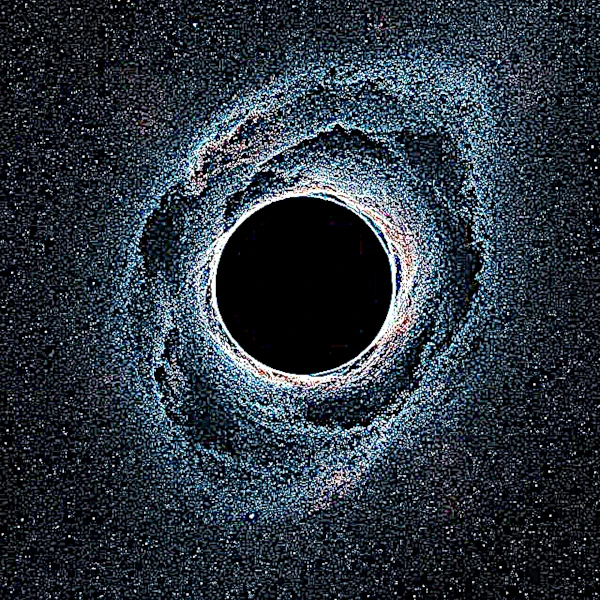
In the primordial Universe (just after the Big Bang), the density of energy and matter was enormous. In some places, they could "collapse in on themselves". These local fluctuations could further concentrate this matter/energy. When this density crossed a critical threshold, gravity took over: the region immediately collapsed to form a primordial black hole.
In other words, primordial black holes (PBH) could have formed in the very first fractions of a second of the Universe, during extreme density fluctuations. Unlike stellar black holes resulting from the collapse of massive stars, these originate from the initial conditions of the cosmos. If a region reached such a local overdensity that its Schwarzschild radius \((R_s = 2GM/c^2)\) became comparable to its causal horizon, a black hole formed immediately.
The possible masses of primordial black holes cover an immense spectrum, ranging from the subatomic scale \((10^{-5}\,\text{g})\) to several thousand solar masses. The mass is determined by the moment of formation: a black hole formed \(10^{-23}\) seconds after the Big Bang would have a mass comparable to that of a mountain, while a PBH formed one second later could reach \(10^5 M_{\odot}\).
We still do not know what dark matter is, but we know it represents about 85% of the matter in the Universe. Primordial black holes (PBH) are a hypothesis to explain part (or all) of this dark matter, as they would be very numerous, invisible (except by their gravity), and formed very early in the cosmos. They could be a form of dark matter, but only within a very narrow mass range, as observations exclude most other scenarios.
Modern research (gravitational microlensing, gamma radiation from Hawking evaporation, anisotropies in the cosmic microwave background) allows us to narrow down the mass range of PBHs that could constitute a significant fraction of dark matter. Low-mass PBHs (\(<10^{15}\,\text{g}\)) should have completely evaporated, while intermediate-mass PBHs are strongly constrained by the lack of gravitational lensing events.
PBHs are considered hypothetical and not widely accepted, and their research relies on indirect signatures.
To date, primordial black holes (PBH) remain mainly theoretical objects. Although their existence is physically and cosmologically possible, there is still no direct evidence, and their role in dark matter is highly debated. Models predict various masses and abundances, but the scientific community does not agree on their actual importance.
| Formation Scale | Typical Mass | Observational Signature | Comment |
|---|---|---|---|
| \(10^{-23}\) s after Big Bang | \(10^{12}\) kg (mass of a mountain) | Rapid Hawking evaporation | These PBHs have probably completely evaporated |
| \(10^{-5}\) s after Big Bang | \(10^{25}\) kg (lunar mass) | Gravitational lenses | Observation limited by lack of detected events |
| 1 s after Big Bang | \(10^{35}\) kg (\(10^5 M_{\odot}\)) | Effects on CMB and galaxy formation | Possible contributions to dark matter are very limited |
Sources: Sasaki et al., 2016; Niikura et al., 2019.